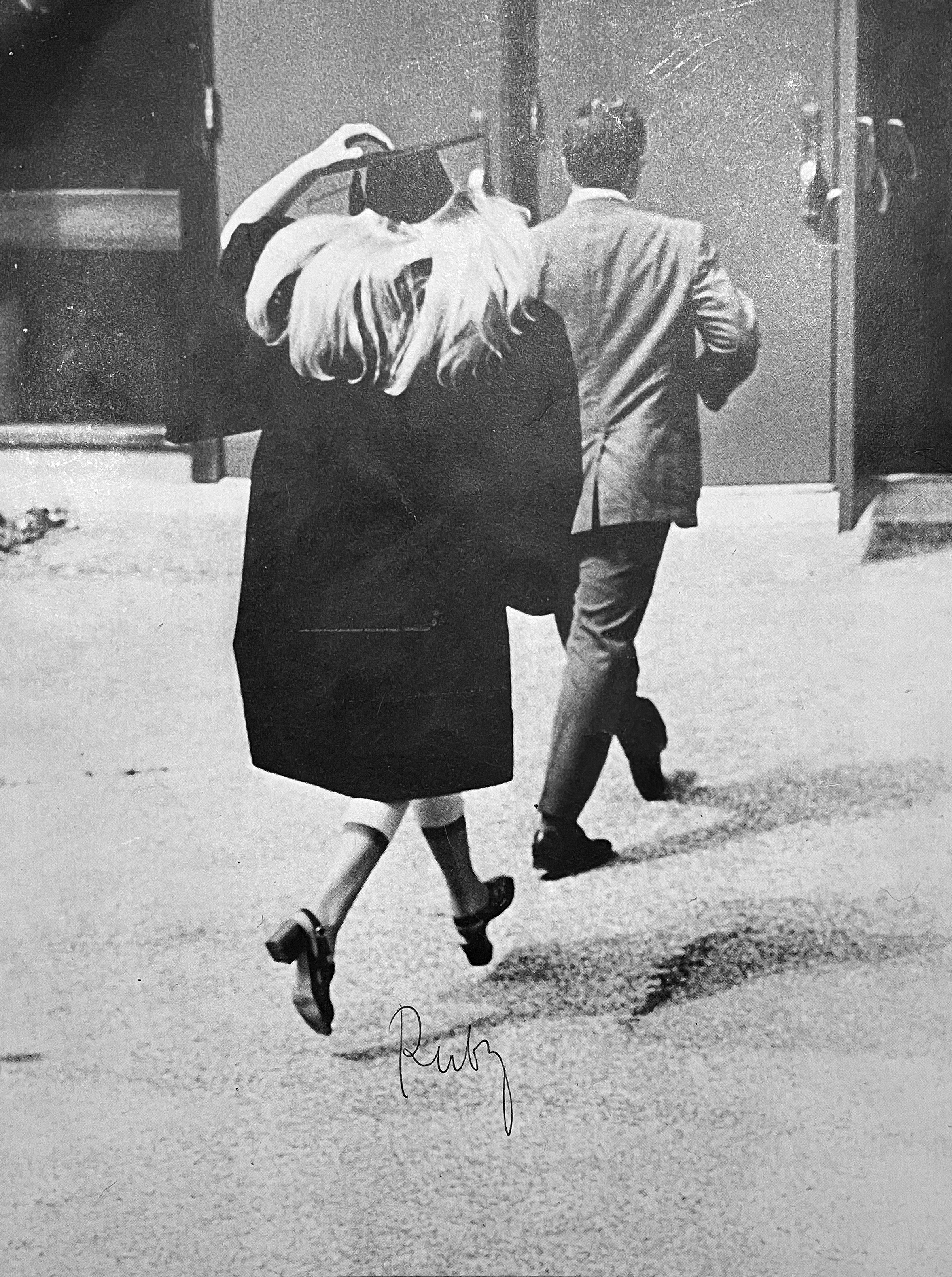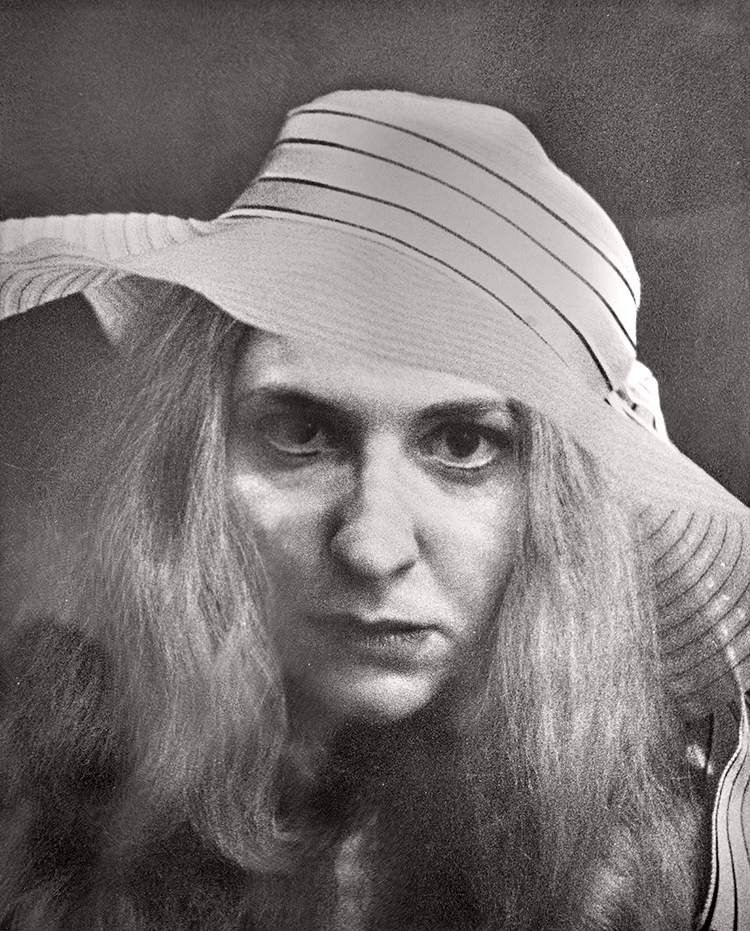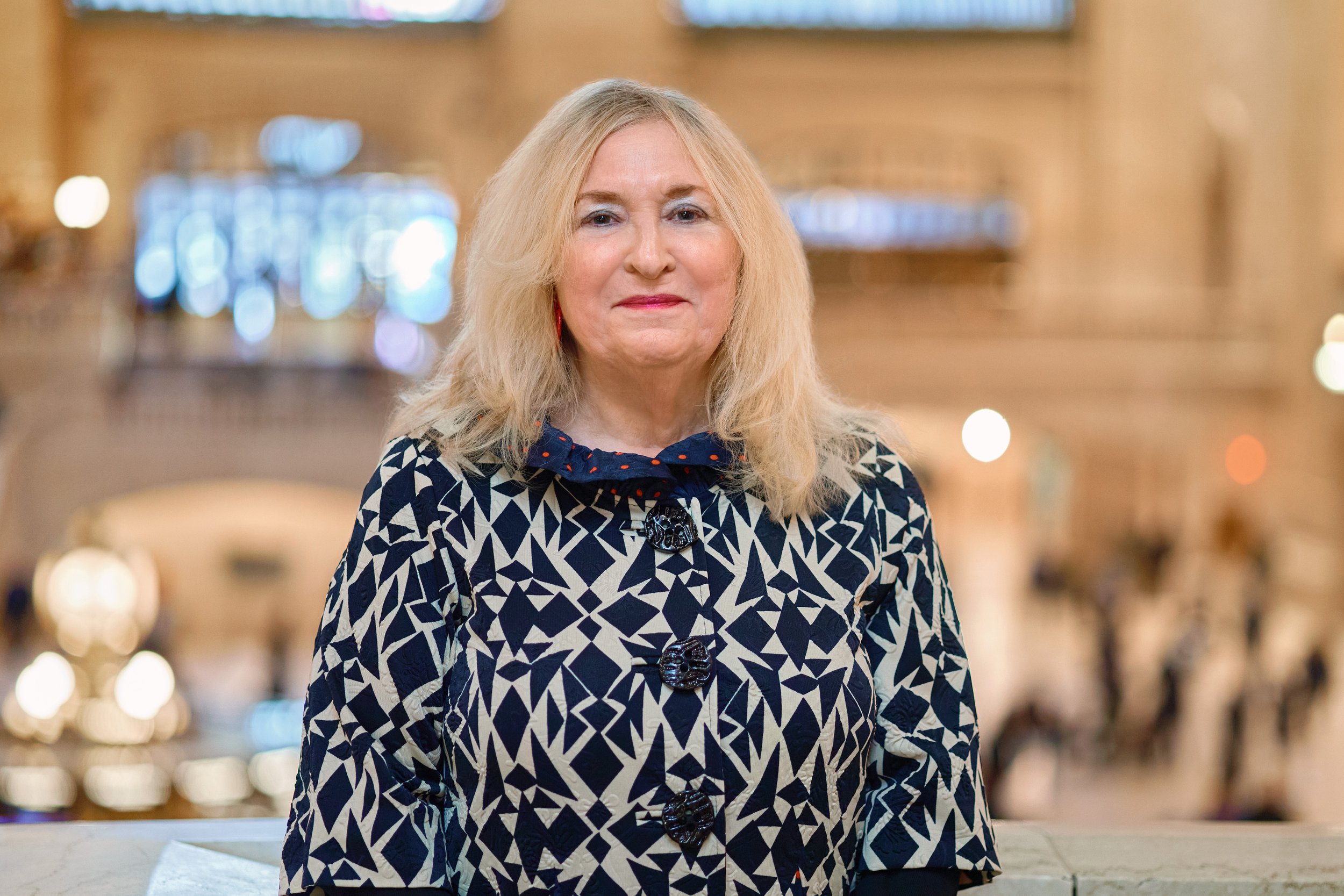
1948-1966
North Carolina
Born with a club foot to immigrant parents in Western North Carolina, Ruby works in her parents’ clothing store in Lenoir, NC, for most of her adolescence; represents her school at the state Spelling Bee twice, loses twice; sells a lot of Girl Scout cookies; is voted Most Likely to Succeed her senior year, which means she gets to be the “capable secretary” to her male counterpart, “the take-it-easy-executive;” becomes a North Carolina Jewish Debutante; and finds a certain kind of freedom in being an outsider.

1966-1976
MD, DC, NC
Ruby heads north to Goucher College in Baltimore where “underground filmmaker” John Waters hangs out in the snack bar (in 2016, she receives an Honorary Doctorate from Maryland Institute College of Art along with him); becomes a Comparative Religion major; teaches poetry in the Baltimore City Schools; is mentored by Florence Howe, founder of the Feminist Press; teaches at Washington, D.C.’s rogue New Education Project during “Woodstock Summer.”
After graduating in 1970, she heads back South to Chapel Hill to attend Library School at UNC. She lasts three weeks. She ends up in grad school in Theater, where she co-runs the student-run Laboratory Theater, wears a pink birdcage on her head for a day, and, on another occasion, slowly disrobes from the nun’s habit she borrows from the costume shop, really confusing her acting teacher. She is known as “Fun Queen.” Fortunately, no photos exist of these escapades.
After grad school, in 1974, she is accepted into the innovative Visiting Artist Program, a joint effort of the NC Arts Council and the state’s Department of Community Colleges. Her 2-year residency is in Shelby, NC, at the Cleveland County Vocational Technical Institute, located on the former site of the county’s “poor farm.” The school gives her their barn, and there she does film screenings, directs plays, and organizes a “Women in the Arts Weekend,” featuring other women in the Visiting Artist Program as well as women from the new-at-the-time CETA (Comprehensive Employment and Training Act) program. The Women in the Arts Weekend made arts workshops in dance, poetry, ceramics, theater, and more, available to local high school students and provided opportunities for the participating artists to learn about each other’s work.
Many years later, she meets Ray Marshall, the Secretary of Labor under Carter. When she introduces herself and says she works in the arts, he proudly asserts that he created one of the largest art programs in the country’s history. At the time she thought: who is this guy? But he wasn’t lying: more than 10,000 artists and an additional 10,000 support staff were given full-time employment through the revolutionary CETA program, which ran from 1974-1980. Although the arts weren’t originally included in the Act, they got added later. The first artists’ project was launched in San Francisco in 1974, followed by Chicago, Washington, D.C., and other cities and states, like NC, with the largest program taking place in New York. Many organizations we continue to treasure today were born as a result of that program, and it resonates as an inspirational model of artist support.

1976-1986
NY, TN, GA
After six years back in the small town South, she gets restless, realizes she needs subtitles more than squirrels, moves to NYC, and arrives at the Manhattan Theatre Club where she becomes their first Audience Development Director-(without knowing exactly what that was). Nonetheless, she triples the audience in her four years there and meets the Roadside Theater crew from The Appalshop. They encourage her to head back South to run Alternate ROOTS, a groundbreaking regional organization supporting Southeastern performing artists who were all creating new work–work that grew directly out of their relationships with their communities. ROOTS had been founded in 1976 at the important Highlander Center in east Tennessee, a catalyst for grassroots activism in the South.
She moves herself and ROOTS from Knoxville to Atlanta on a gloomy New Year’s Eve day at the end of 1981, and stops on the side of the road when The Eagles Take It to the Limit starts playing on the car radio…“So put me on a highway/Show me a sign/Take it to the limit/One more time.” She bursts into tears as she heads into the city of Atlanta for her next adventure. While at ROOTS, she produces artist retreats and public festivals, and raises funding to help SE artists tour their work. Her advocacy for regional arts and culture gets louder.

1986-1998
GA, NY
Ruby takes a moment between directing organizations to research and produce Bananaland, a wild, participatory, documentary theater installation, with documentary filmmaker George King. It tells the story of U.S. involvement in Central America, done as a rundown 50’s theme park with a cardboard aesthetic and the banana as a metaphor, timed to coincide with the 1988 Democratic National Convention in Atlanta.
Then, after two years of independent consulting, Ruby jumps from the performing arts to become Director of IMAGE Film and Video Center in Atlanta. After four years there, she is invited to apply for the Executive Director position at the Association of Independent Video and Filmmakers (AIVF), the national advocacy organization for independent media artists, in NYC. By virtue of her ED position there, she also becomes Publisher of The Independent Film and Video Monthly, a respected publication in the indie media field.
When she moves back to NY, the staff at AIVF greets Ruby with: “What should we do with the eviction notice that was posted on the door this morning? And, we hope it’s ok that we authorized the subtenant to replace the window that was shot out by snipers over the weekend.” Oy vey. Welcome Back!
Along with many others in the field, she writes, speaks, and organizes around the critical cultural issues of that time. Her sciatica heats up along with the Culture Wars.

1998-Present
New York
The intensifying Culture Wars culminate in The NEA Four case, National Endowment for the Arts v. Finley. It wound its way up to the Supreme Court in 1998 and we lost. That loss, along with pressure from Congress, causes the NEA to stop funding most individual artist projects, a policy that continues to this day. It was devastating to have the government, which seemed to support its creative individual voices, turn against the community. It wasn’t just the loss of funding; it was also the impact of devaluing artists’ contributions to the cultural life of the country.
In late 1997, Ruby begins having conversations with Arch Gillies, then the President of the Andy Warhol Foundation, about setting up a new entity specifically to support adventurous artists. It would not shy away from challenging or controversial subject matter. That moment happens to coincide with the dotcom boom, when many newly minted philanthropists begin to question traditional philanthropy. “Venture Philanthropy” is born, and Gillies invites Ruby to “invent” a brand new organization, with venture capital approaches as one of the primary drivers of the experiment. She doesn’t know doodly-squat about venture capital, but loves challenging convention, so, of course, she accepts the position.
Creative Capital launches in May of 1999 to much fanfare, including a front page mention in The New York Times, leading to the full story in the Arts Section. More than 200 articles appear nationwide, many quite skeptical, with conservative media downright hostile. Ruby immediately declares herself Director of Expectation Modification. During her tenure, it turns out expectations don't need to be modified, as the extraordinary awardees pile up success after success, with many doing culture-changing work, reaching millions of audience members. During her almost 17-year tenure conceiving and directing the organization, more than $40 million in financial and advisory support is distributed to nearly 650 artists, which helps them leverage almost $100 million in additional support.
Though she claims to “retire” in 2016, she finds herself busier than ever, including 2017 stints as the Inaugural Herberger Institute Senior Policy Advisor at Arizona State University and Senior Advisor to the Patty Disney Center for Life and Work at CalArts. In 2018, she begins serving as an Advisor to the Culture and Art Program at the Open Society Institute, where she continues to work with recipients of their International Arts Fellowship grants.
Ruby currently serves on many arts boards and advisory boards, and beginning in 2016, experiencing increasing political rage, begins to direct her attention toward addressing the cultural/political emergency we are currently experiencing.































































